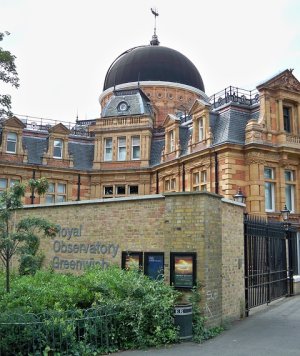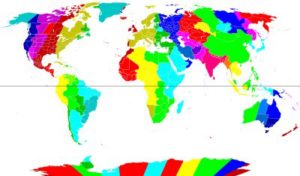Time Standards

Since its establishment in the General Conference on Weights and Measures in 1967, the globally accepted standard of time measurement is the SI System (see the section on Units of Measurement), which uses the second as the base unit of time. Timekeeping is so important in the modern world, both for scientific purposes and increasingly for more general purposes, that it is now coordinated at an international level, and synchronized using incredibly precise atomic clocks (see the section on Clocks).
However, even if we can agree on the unit of measurement, there are several different specifications that can be used for measuring the rate at which time passes and/or points in time and coordinating that time across the world, and these specifications are known as time standards. Many of these standards are linked or related but differ from one another in certain small details, and some are used for very specific purposes.
International Atomic Time (TAI)
International Atomic Time (Temps atomique international, or TAI) is a weighted average of the time kept by over 200 atomic (mainly caesium) clocks worldwide, synchronized using GPS signals and two-way satellite time and frequency transfers, resulting in far more stability than a reading from any single clock. Because of the extreme accuracy of the atomic clocks, the contributing clocks are even corrected for height above sea level (see the section on Relativistic Time). TAI is the basis for Coordinated Universal Time (UTC), which is used for civil timekeeping throughout the world, and for Terrestrial Time (TT), which is the main standard used for astronomical calculations, both of which are described below.
Universal Time (UT)
Universal Time (UT) is based on mean solar time (i.e. based on the rotation of the Earth), and so is the same everywhere on Earth. UT replaced the older telescope-based system Greenwich Mean Time (see below) in 1928 as the worldwide time standard for the setting of Standard Time (also see below), although the older term GMT is still often used informally to refer to UT. The principal form of Universal Time is UT1, which is computed from observations of astronomical phenomena even more precise than measurements of the Sun, including observations of distant stars and quasars, laser ranging of the Moon and artificial satellites, and the determination of GPS satellite orbits, scaled and adjusted slightly to make them closer to solar time. UT2 (rarely used today) is a smoothed version of UT1, which filters out periodic seasonal variations.
Coordinated Universal Time (UTC)
Coordinated Universal Time (Temps Universel Coordonné, or UTC), which differs from UT1 by 0.9 seconds, is now the primary time standard by which the world’s civilian authorities regulate their clocks (although with some adjustments – see Standard Time below). Since 1964, under the auspices of the International Astronomical Union, international time broadcasts have been coordinated and adjusted as needed to conform to Coordinated Universal Time. UTC uses the same SI definition of seconds as International Atomic Time, and differs from TAI only by an integer number of seconds caused by the addition of leap seconds added at irregular intervals to compensate for the slowing of Earth’s rotation and natural cataclysms like earthquakes and hurricanes (a cumulative difference of 25 seconds as of 2012).
Standard Time (ST)

Standard Time (ST) is the usual clock time that most people use in daily life, and the basis for official civil time. It is based on Universal Time (see above), but seeks to take into account the geographical position of different parts of the Earth in relation to the Sun (and their consequent day and night cycles). ST was originally formalized by the Scottish-Canadian Sir Sandford Fleming in 1879, prior to which each country, and even each town, followed its own time. Standard Time divides the world into 24 time zones, each one covering 15 degrees of longitude (although, for reasons of practicality, some zones also follow country boundaries for part of their length), so that everyone on the planet has the Sun more or less at its highest point in the sky at noon. ST is defined in terms of offsets from the Prime Meridian, or 0° longitude, in Greenwich, England (also see Greenwich Mean Time below), and all clocks within each time zone are set to the same time as the others, and differ by one hour from those in the neighboring zones, although in a few cases half-hour, or even quarter-hour, offsets are also observed. The International Date Line is a line in the mid-Pacific Ocean at 180° longitude, where a calendar day must be added when travelling westward, and a day dropped when travelling eastward. Standard Time is also sometimes adjusted by daylight saving time (DST, or summer time), whereby clocks are advanced one hour during the lighter summer months so that evenings have more apparent daylight and mornings have less. DST was first implemented during the First World War, mainly to more closely match the hours that people are awake, thereby lowering the need for artificial light and conserving fuel. Many other countries have used it since then, and many still do, including most of Europe and North America.
Greenwich Mean Time (GMT)
Greenwich Mean Time (GMT) was the earliest internationally accepted time standard. It was established at the International Meridian Conference in 1884, when it was decided to place the Prime Meridian (0° longitude) at Greenwich, England, although Greenwich was already widely used as a standard since the establishment there of the Royal Observatory in 1675. It is a telescope-based standard, with noon GMT defined as the average (mean) time at which the Sun crosses the Prime Meridian and reaches its highest point in the sky there. Other time zones across the world, as used in Standard Time (see above), are defined in terms of offsets from GMT, so that all clocks within each time zone are set to the same time as the others. GMT was superseded as the main international standard by Universal Time (see above) in 1928, although UT is still often referred to informally as GMT.
GPS Time
GPS Time is the time standard used by the Global Positioning System (GPS), the space-based satellite navigation system, first developed in 1973 and made fully operational in in 1995, that provides location and time information to military, civil and commercial users around the world. GPS time is not corrected to match the rotation of the Earth, so it does not contain leap seconds or other corrections that are periodically added to UTC (GPS time was set to match UTC in 1980, but has since diverged), and periodic corrections have to be made to the on-board clocks to keep them synchronized with ground clocks. On the other hand, it differs from International Atomic Time by a constant offset of about 19 seconds.
Terrestrial Time (TT)
Terrestrial Time (TT) is a modern astronomical time standard, used primarily for time-measurements of astronomical observations made from the surface of the Earth. It is a dynamical time standard, meaning that it is defined implicitly, inferred from the observed positions of astronomical objects according to a theory of its motion, usually based on ephemerides, tables of the orbital positions of planet or satellites mapped over a period of time. Since the 1970s, it has superseded the similar Terrestrial Dynamical Time (TDT) and Barycentric Dynamical Time (TDB) standards, which were flawed, and the earlier Ephemeris Time (ET) standard before that. It uses standard SI seconds, and differs from International Atomic Time (see above) by about 32 seconds, although it is not itself defined by atomic clocks, but is essentially a theoretical ideal which real clocks can only approximate.
Sidereal Time
Sidereal time is a timekeeping system used by astronomers to keep track of the direction to point their telescopes to view a given star in the night sky. It is based on the Earth’s rate of rotation measured relative to the “fixed stars”, as opposed to solar time which reckons the passage of time based on the Sun’s position in the sky. As a result of the orbit of the Earth around the Sun, a sidereal day is about 4 minutes less than a solar day, varying from 3 minutes 35 seconds to 4 minutes 26 seconds due to the elliptic path of the Earth’s orbit.
System Time
System time on a computer is measured by a system clock, which is typically implemented as a simple count of the number of “ticks” that have transpired since some arbitrary starting date, called the epoch. Several variations of metric time are used in computing. The widely-used UNIX time is defined as the number of seconds elapsed since 00:00:00 UTC on 1 January 1970. Microsoft’s FILETIME uses multiples of 100ns since 1 January 1601. OpenVMS uses the number of 100ns since 17 November 1858, and RISC OS use the number of centiseconds since 1 January 1900. Most computers use the Network Time Protocol (NTP), one of the oldest Internet protocols used to coordinate computer clocks to Coordinated Universal Time (see above).
Convert by Different Time Standards & Units
Counting time from before today